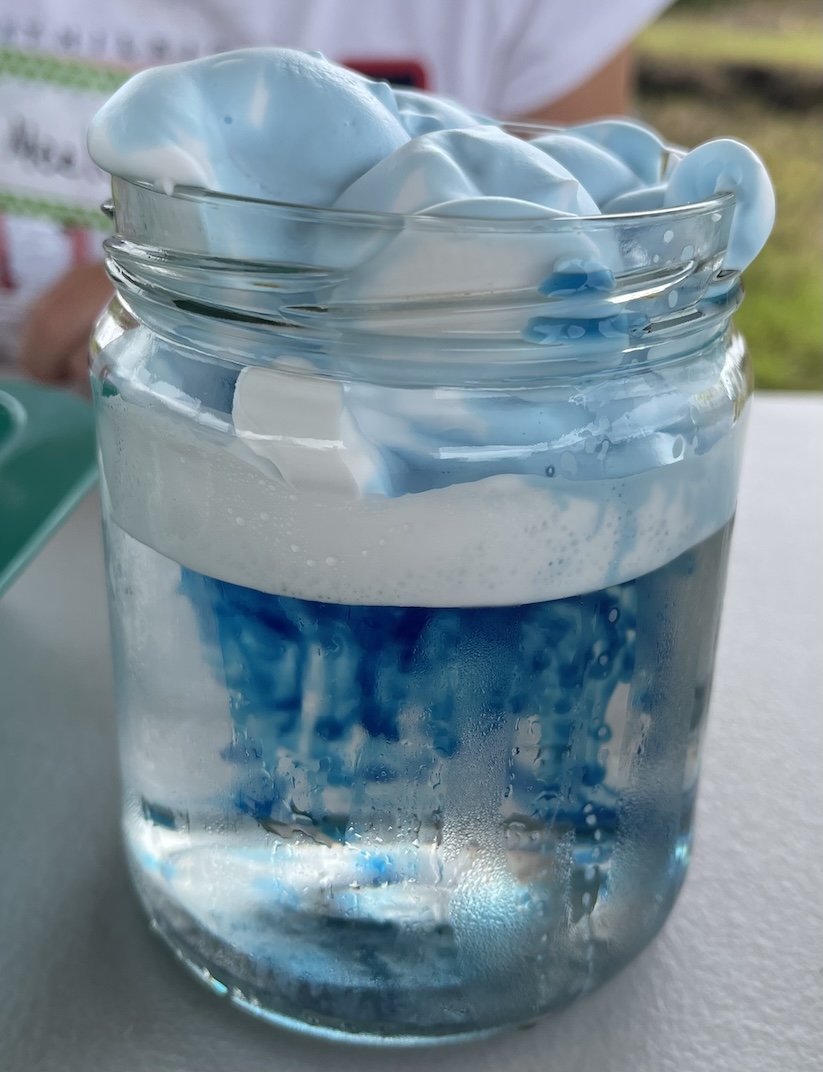On May 6th, 2023, I had the pleasure of hosting an event at the Hawaii Keiki Museum. The main focus of the day was to introduce children in grades K-5 to the captivating concept of water surface tension and its role in bubble formation. Through engaging experiments and interactive demonstrations, the children discovered the fascinating science behind blowing bubbles and the essential ingredient that makes it all possible: soap!
The day kicked off with a discussion about the properties of water and the concept of surface tension. I explained to the children that water molecules have a special attraction to each other, which creates a thin “skin” on the surface of the water. This surface tension allows certain objects, like insects, to float on the water and even small droplets to form beads.
Next, I introduced the children to soap, which serves as a bubble-making hero by reducing the surface tension of water. We discussed how soap molecules have a unique structure that allows them to interfere with the attractive forces between water molecules. This interference weakens the water’s surface tension, enabling the formation of thin films that trap air and create bubbles.
Experiment 1: Surface Tension Hole with Black Pepper
To demonstrate the concept of surface tension visually, we performed an experiment called the “surface tension hole.” I sprinkled a small amount of black pepper on the surface of water in a dish. When dropping the soap in the dish, the pepper particles moved away from the point of contact, forming a clear “hole” in the pepper layer. This activity showcased the power of surface tension and its impact on substances floating on the water’s surface.
Experiment 2: Penny Drop
For our next experiment, we conducted the “penny drop” activity. Each child received a penny and a small dropper filled with water. I instructed them to carefully place water droplets on top of the penny, observing how the water formed a dome-like shape due to surface tension. They were then encouraged to count how the additional droplets they could add before the water spilled over the edges. This experiment reinforced the concept of surface tension and allowed the children to explore its limits.
Hands-on DIY Bubble Wand
Children crafted their own bubble wands using recycled materials: yarn and chopsticks. These readily available items not only sparked their creativity but also instilled a sense of environmental responsibility.
Special Bubble Juice with a Polymer Twist
To take our bubble-blowing experience to the next level, I prepared a special bubble juice with a unique polymer. The addition of this polymer made our bubble solution more elastic, allowing for larger and longer-lasting bubbles.

Overall
It was truly gratifying to witness the joy and wonder on the children’s faces as they explored the science of bubbles through this hands-on activity.
Thank you, Hawaii Keiki Museum for co-hosting this event with Keiki Labs. I am looking forward to the next ones!


